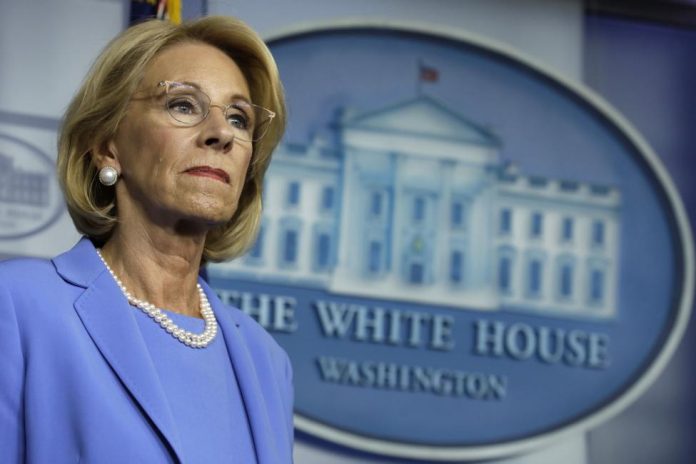
April 15 (UPI) — Nearly $3 billion in aid will be released to governors to help schools affected by the coronavirus crisis continue education for students, the Department of Education said Tuesday.
U.S. Secretary of Education Betsy DeVos made the announcement after taking action Monday to send $6 billion in cash grants to colleges and universities. The $3 billion in aid announced Tuesday is the first aid for K-12 schools from the Coronavirus Aid, Relief, and Economic Security Act.
Still, the $3 billion fund is different from the $13.5 billion in the CARES Act, which is just for K-12.
It will be up to the governors to decide the amount of money that goes to K-12 as opposed to higher education.
The Governor’s Emergency Education Relief Fund “is an extraordinary flexible ’emergency block grant’ designed to enable governors to decide how best to meet the needs of students, schools, postsecondary institutions, and other education-related organizations,” the Department’s statement said.
The Department noted that the funding includes aid for charter and non-public schools.
“Governors have the opportunity to truly rethink and transform the approach to education during this national emergency and ensure learning continues,” DeVos said. “At a time when so many school boards and superintendents have shut down learning for the balance of the school year, I want to encourage each and every governor to focus on continuity of education for all students. Parents, families, teachers and other local education leaders are depending on their leadership to ensure students don’t fall behind.”
The seven-page application is available on the Department’s website.
DeVos has yet to announce when the $13.5 billion earmarked for K-12 will be distributed. That pot of money must go to state education agencies that will distribute at least 90 percent of the funds to local education agencies based on their share of economically disadvantaged students.






